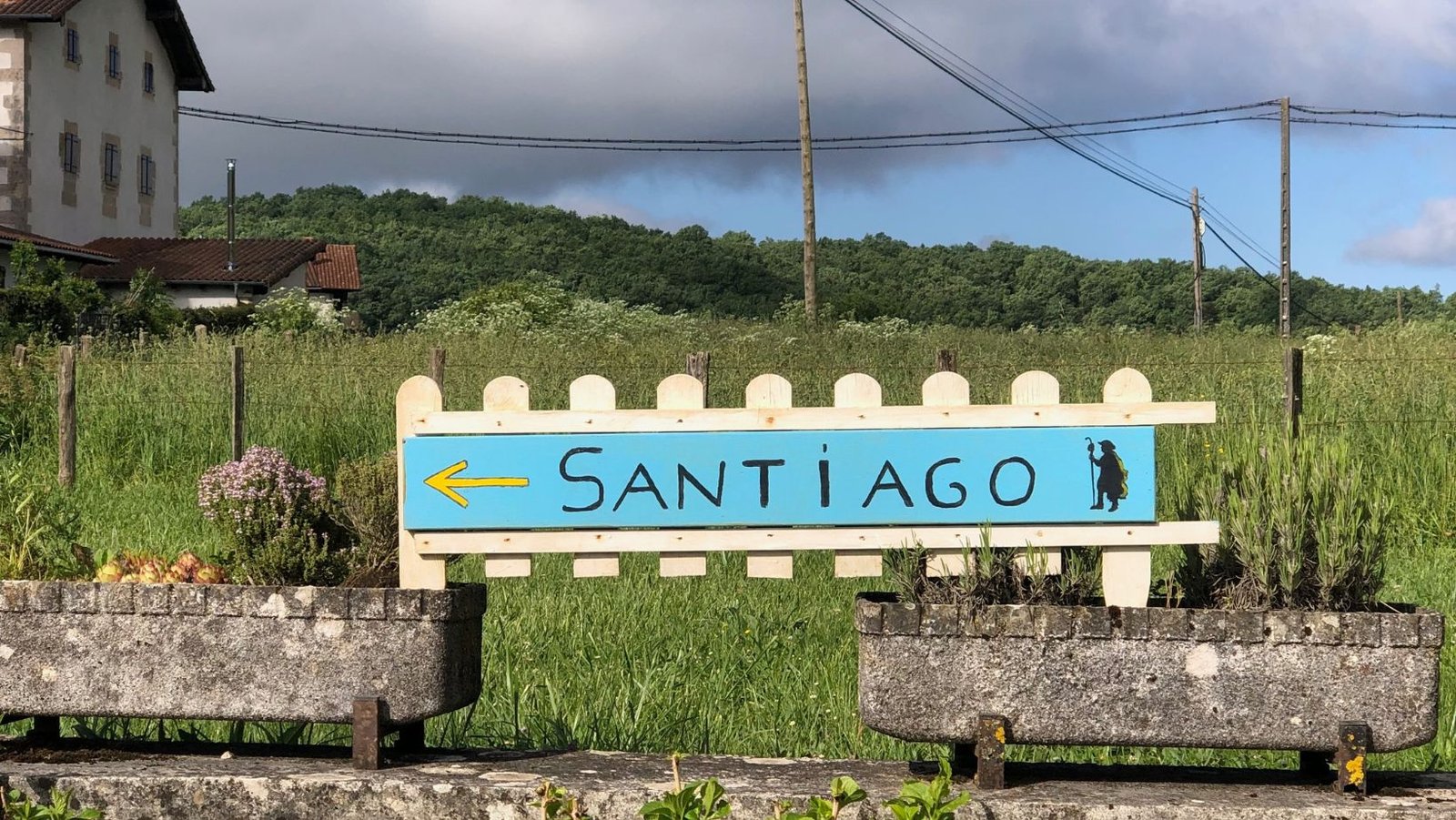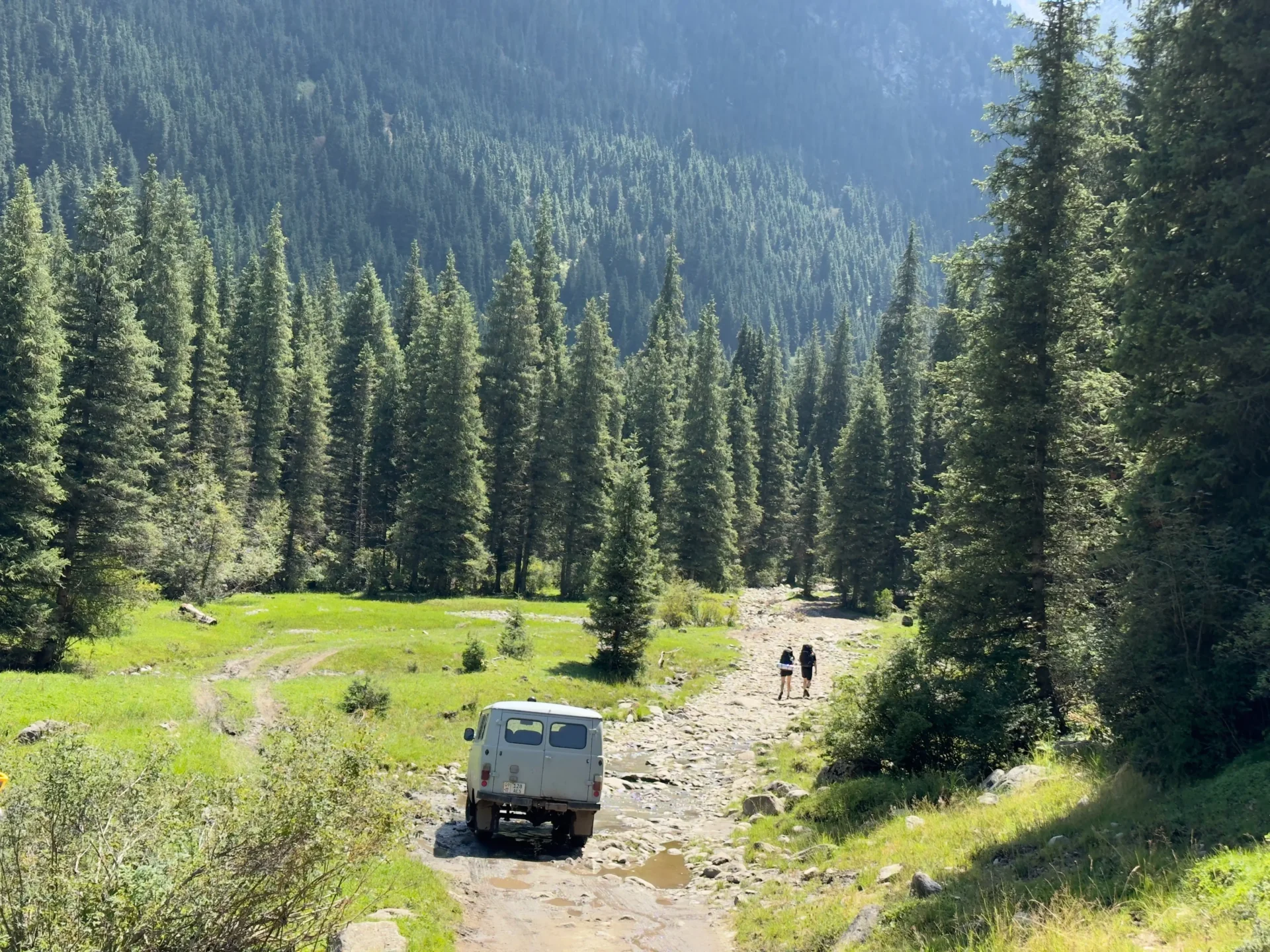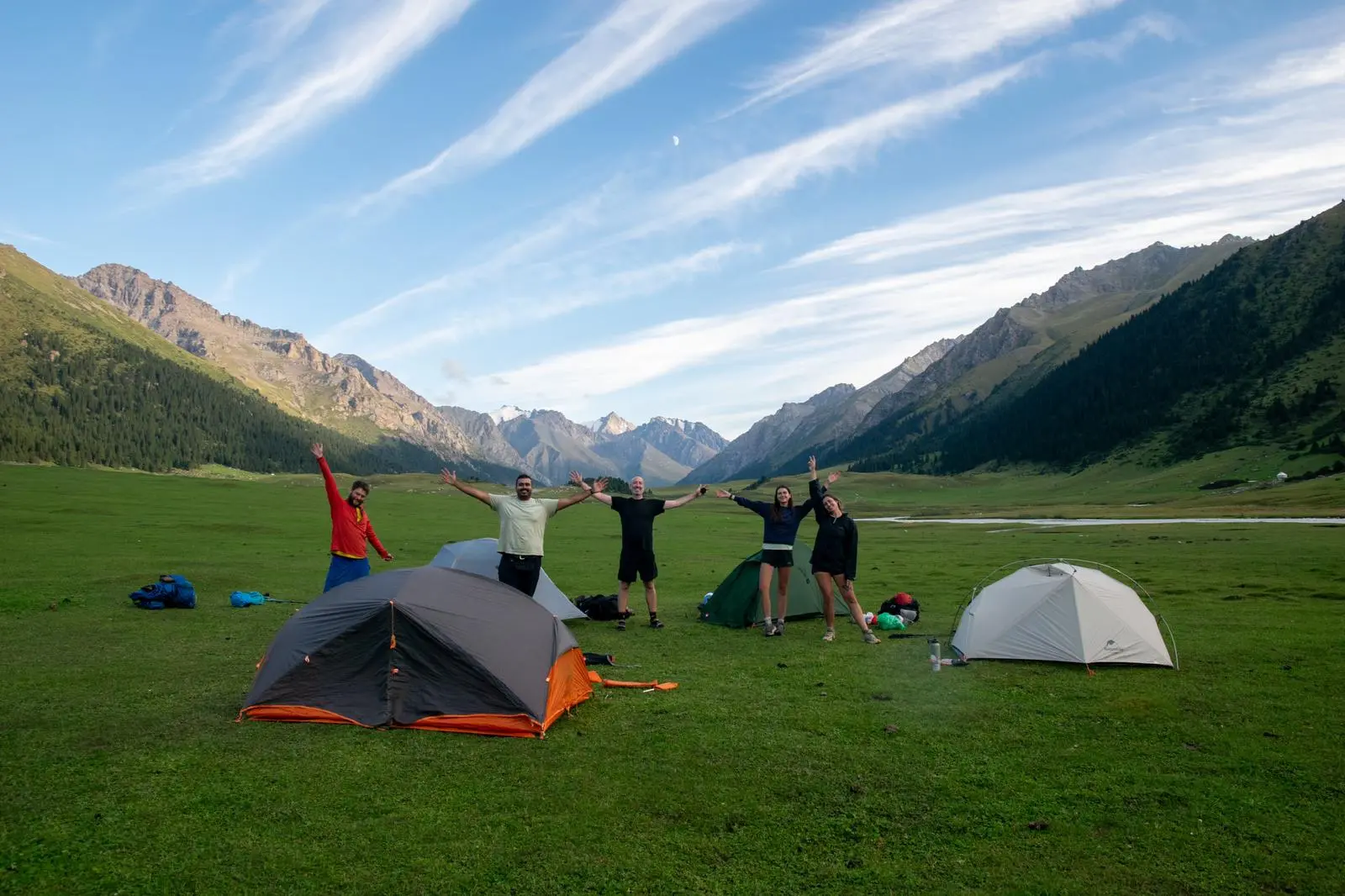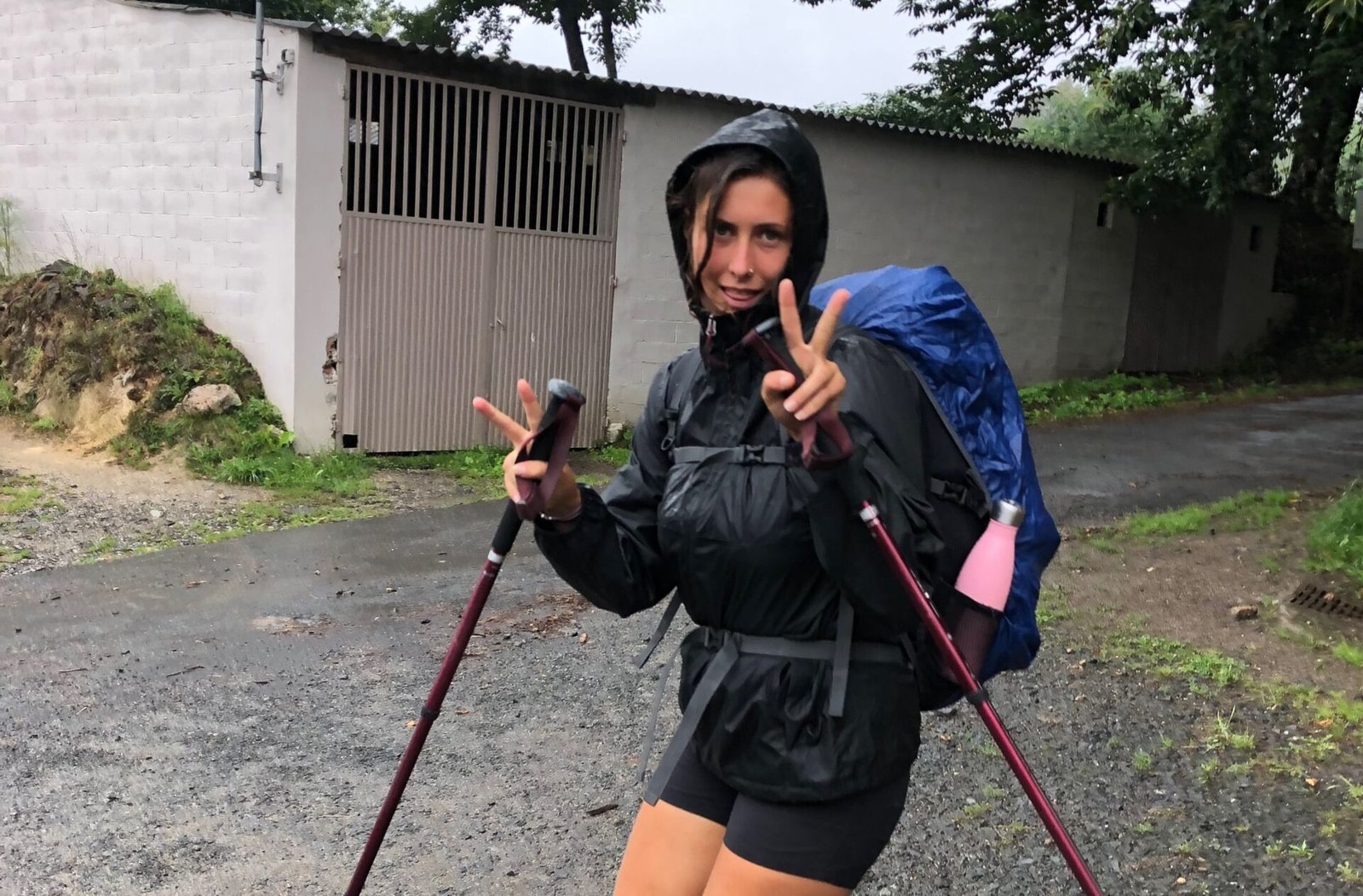So you’ve got your eye on walking the Camino de Santiago this year, but want to be able to do it on a small budget? This short Camino guide covers how to walk the Camino Francés on only €20 a day, including budgeting for pre-Camino costs, accommodation and food. Note: this budget is from 2022, prices may have increased slightly now.
While there are seven main Camino routes to Santiago de Compostela—Camino Francés, Camino del Norte, Camino Primitivo, Camino Inglés, Camino Finisterre, Camino Invierno, and Camino Portugués—your budget will vary depending on which one you choose.
The Camino Francés is generally the cheapest option, thanks to its popularity and plenty of municipal albergues geared towards pilgrims. While the Camino del Norte is said to be the most expensive, given it’s a coastal route with fewer albergues, meaning you may need to stay in pricier private accommodations or guesthouses.
Back in June ’22, I walked the Camino Francés with my (now ex, opps!) boyfriend Marius, starting in St. Jean Pied de Port to Santiago de Compostela. I’d just returned from a 5-month backpacking trip in Mexico, and my savings were running low, so we agreed on a small budget of EUR 20 each per day, totalling around EUR 600 for 30 days on the trail. This excluded any costs to and from the starting point and any gear, but as you read this post, you’ll realise how little I needed to spend on gear and transportation.
My budget on the Camino Francés
total days hiking: 30
daily budget: €20
days under budget: 13
days on budget: 12
days over budget: 7
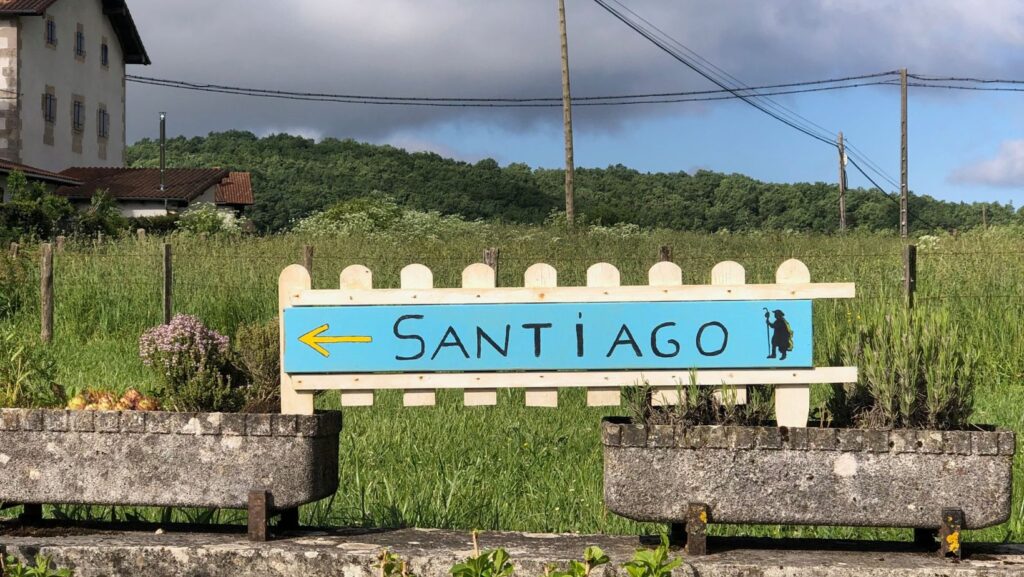
Pre-Camino de Santiago Costs
Hiking Gear for Camino Francés
Alright, so first things first. You need very little professional gear when walking the Camino Francés. There are all kinds of pilgrims, all with a range of gear: some kitted out in Osprey, others in Decathlon, and others just in whatever they could find from family members and friends.
Obviously, walking in summer vs. winter is a completely different story. In winter, you’ll need some warm layers and waterproofs, but if you’re tackling the Camino in the summer months, as I did, chuck on a few light T-shirt shorts, one change of clothes for the night and a waterproof Mac (for the Galicia sections), and you’re good to go.
What I’m trying to say is that you don’t need a lot of money or gear. I used my sister’s old mountain warehouse backpack; I already owned hiking boots and spent €20 on hiking poles in Spain. My biggest regret was not bringing my sleeping bag, as it does get cold at night in albergues.
total spent on hiking gear: €20
Rule out hiking boots.
I made the mistake of hiking in my Merrell Hiking Boots, and they gave me the worst blisters. My honest advice is to alternate between some hiking/trail runners and sandals. My shortlist of must-haves is:
Okay, on to the costs of getting to and from the Camino Francés.
Cost of travelling to and from Camino FrancéS
I’m well aware that I’m fortunate to live in Europe and be close to Spain. People talk shit about RyanAir, but it makes travel more accessible. My flight from London to Biarritz was €22, and because I only flew with a small bag, I didn’t have to pay for extra add-ons. Once I landed in Biarritz, I needed to catch a bus and a train to St Jean Pied de Port.
RyanAir Flight London to Biarritz – €22
Bus and train from Biarritz Airport to St Jean Pied de Port – €13
Once we arrived in Santiago de Compostela, we coughed up a little more for a private room to rest and then decided to hitchhike from Santiago to Madrid, where we caught a flight to Norway to meet Marius’ family. It was a success, and we got to Madrid in plenty of time.
From Santiago de Compostela to Madrid – €0 (we hitchhiked).
Accommodation on the Camino Francés
average daily spend on accommodation: €8
most expensive accommodation: €28 (€56 for two) for a private room in Santiago
cheapest accommodation: €5
nights spent in:
municipal albergue: 20/30
donativo albergue: 8/30
private albergue: 2/30
Stay in Municipal and Donativos Albergues
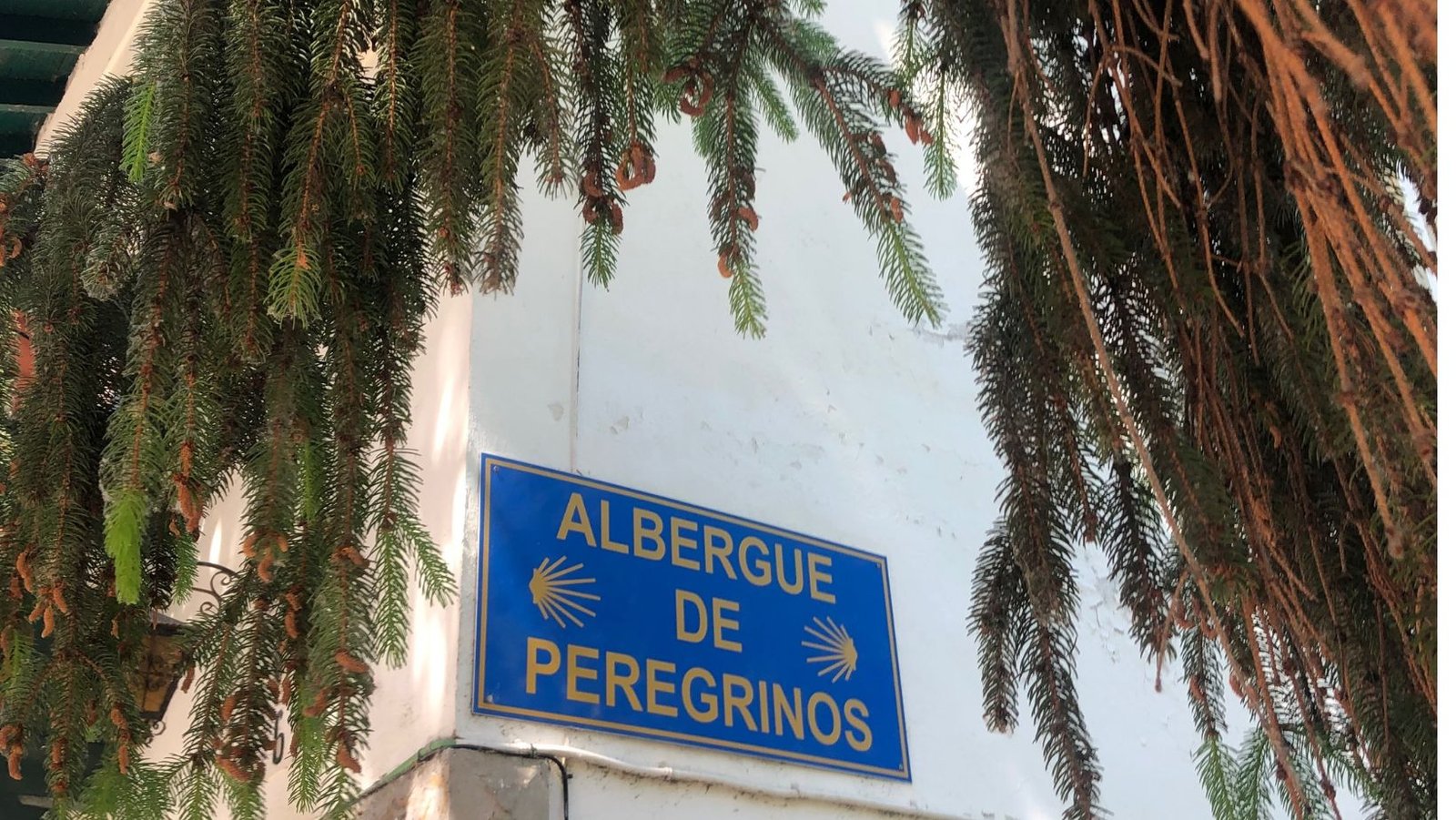
So if you’re unfamiliar with the Camino, there are three kinds of albergues: private, municipal and donativos.
Private albergues are run by private individuals and tend to be more expensive, but the plus side is that you can book in advance. We only stayed in a private albergue at the beginning and end of our Camino.
Municipal albergues are sponsored by the local government and run by volunteers. Some can be extremely basic, while others are surprisingly nice! They tend to be from €5 to €10, and you can’t book in advance; you have to turn up and queue outside for the albergue to open around 2 or 3 pm.
Donativos albergues are donation-based albergues run by volunteers. Normally, these albergues host community meals. Of course, if your budget is really tight and you’re struggling, it’s okay not to leave a donation. But if you can donate something to keep the Albergue running and cover their overheads, please do!
Download the Buen Camino app
If you download the Buen Camino app, you can see an updated list of all the albergues in each town. It’ll break down the price, facilities, etc.
Emily and Alex, the best brother and sister duo whom we met on the Camino, were into the donativo life as much as we were. Together, we used the Buen Camino app to figure out how to end up in a donativo albergue at the end of the day. It wasn’t just about saving a little bit of money; every donativo we went to offered us such a unique experience and projected the communal Camino spirit.
Big shout out to my favourite three donativos we stayed at during the Camino de Frances:
Base your route around albergues that offer community dinners
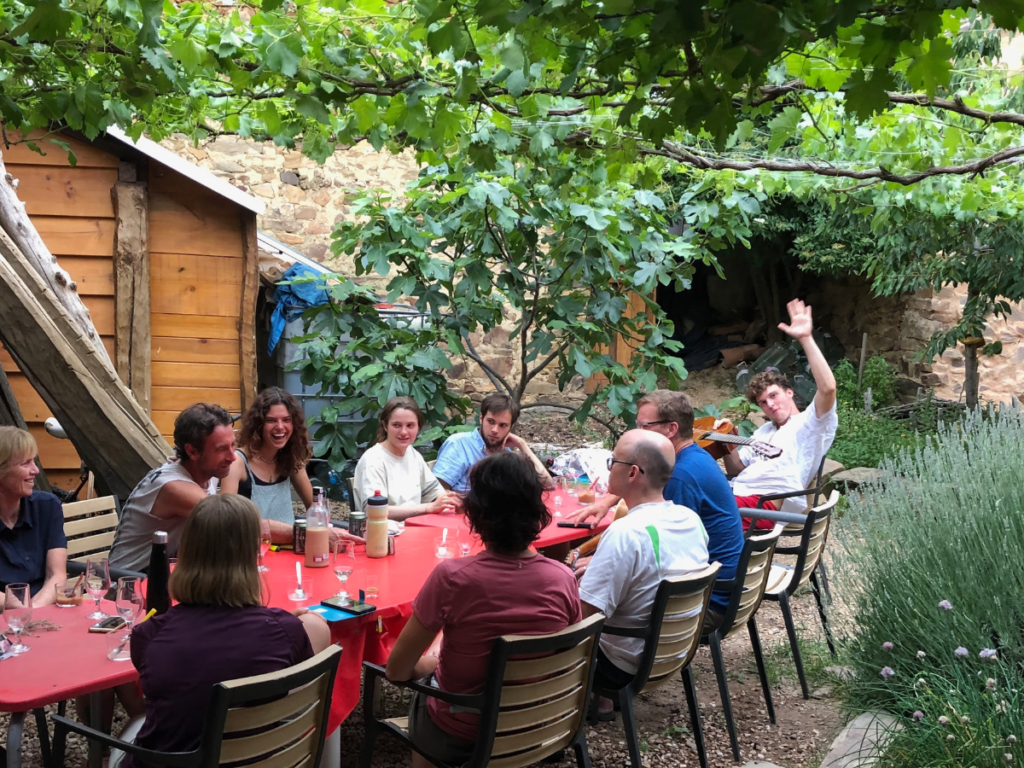
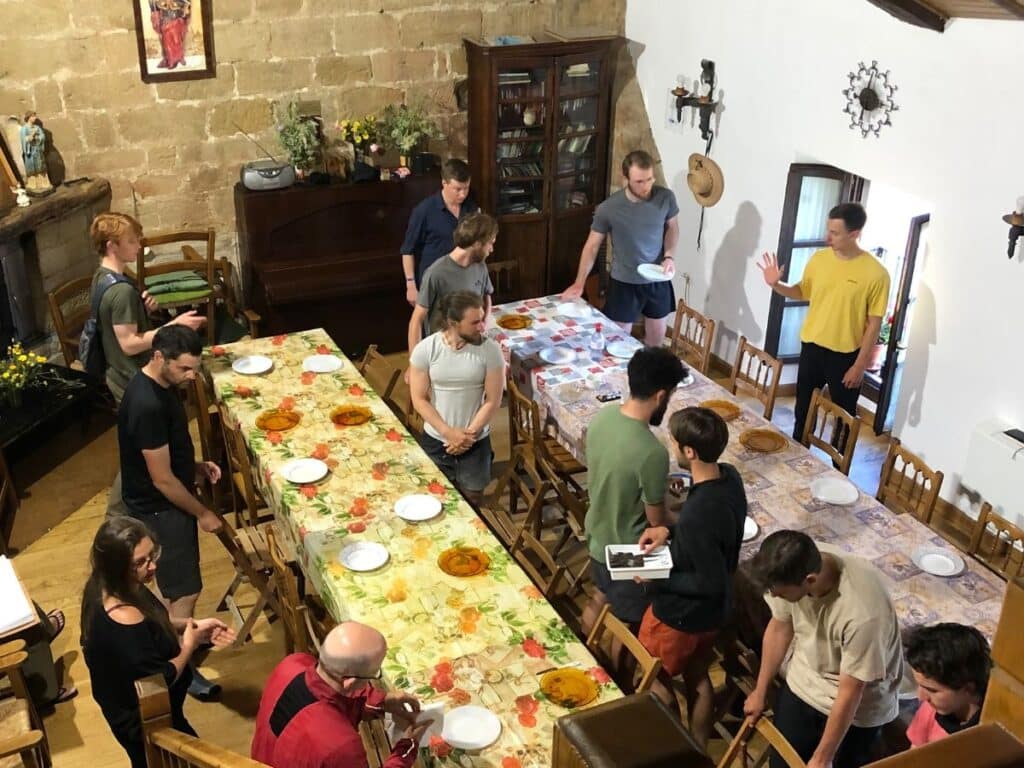
Nothing compares to arriving at an albergue and them telling you “a free dinner is at 7 pm”. Includes saying thanks, being grateful for the journey, cooked by volunteers, and you donate what you can. It’s the spirit of the Camino. The Buen Camino App helps you find these albergues, too.
Cost of food on the Camino Francés
dinners eaten on the Camino:
pilgrim menus at a restaurant: 6/30
cooked in the Albergue: 16/30
in a donativo: 8/30
average number of (per day):
coffees: 1.5
tortillas: 0.7
baguettes: 1
hard-boiled eggs: 3
spoons of peanut butter: 3
Team up and cook dinners with your Camino pals
One of the ways we walked the Camino on a small budget was by sharing dinner costs with other pilgrims. That way, you can split a few bottles of wine, pasta and bread and only pay €2 per person.
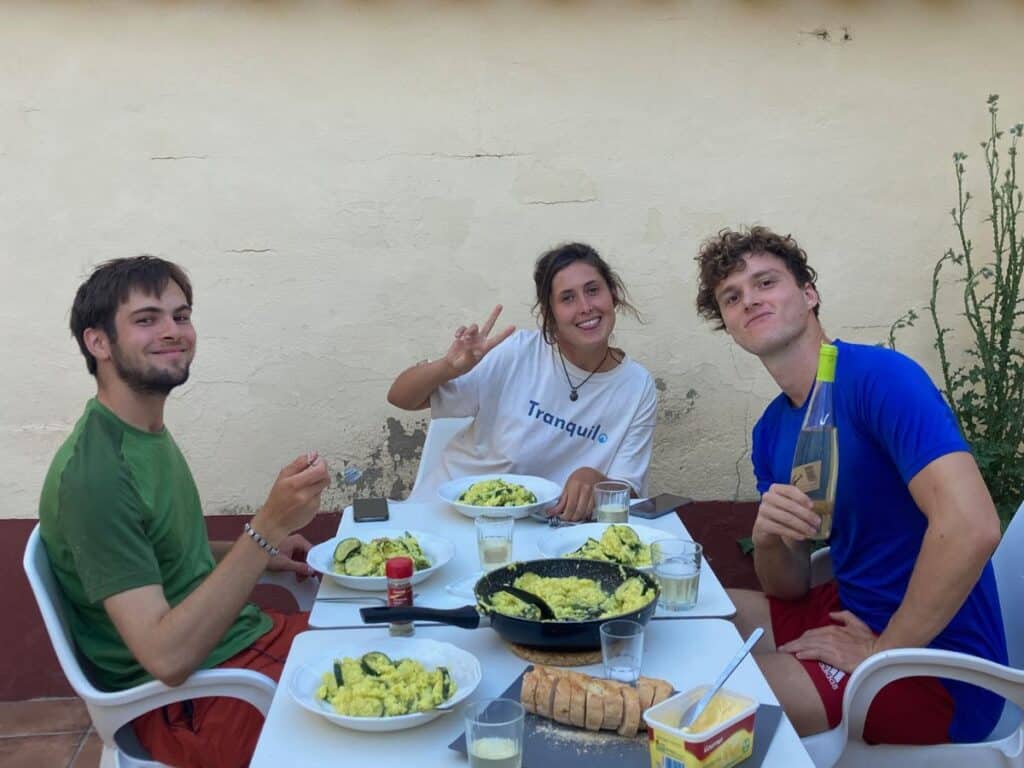
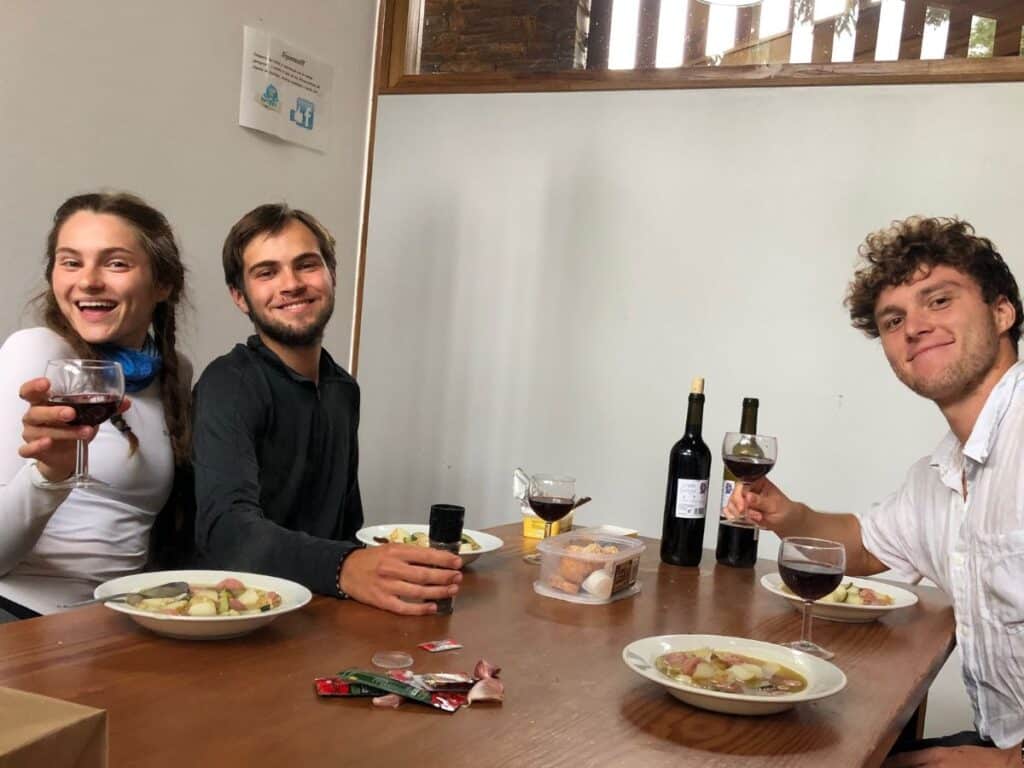
Menu of the day adds up
When I first heard about the Pilgrims Menu bargain, I thought “oh, what, a starter, main, dessert and a bottle of wine for €10!” For sure, it’s great every so often, but if you opt for the Pilgrims Menu every night, you’ll be down €300 just on dinners by the end of the Camino de Frances.
For us, it was a treat to have the Pilgrim’s Menu once or twice a week, but we tried to cook and utilise the albergue kitchen as much as possible.
Lots of supermarket picnics for lunch
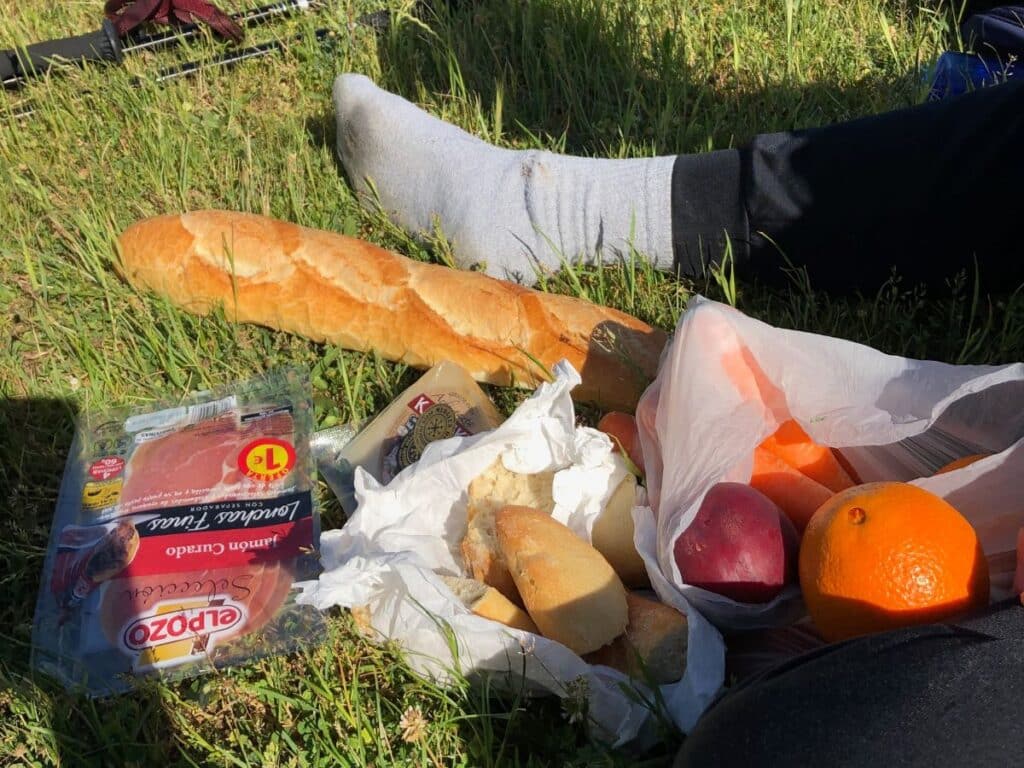
One of the reasons we could walk the Camino on a small budget was by eating out of supermarkets. Our favourite thing to do for lunch was buy a baguette, hummus and tomatoes and sit in a random field just off the trail for some well-needed chill time. Most lunches in cafes would cost you around €4-5, and most of our lunches cost us €2 each.
Stock up at bigger supermarkets
Although all along the Camino there are shops, some of them tend to be small, rural village shops with limited items and on the pricier side. If you’re in a big town and know you’re heading to a small albergue town 10km down the road, stock up for dinner.
Keep an eye out for the self-service donativo stalls en route!
These are like pockets of magic on the Camino de Frances. Imagine: You are walking and walking, feeling tired and questioning why you’re putting your feet through this pain, and then all of a sudden, you come across a donation-based cafe in the middle of nowhere. Bliss.
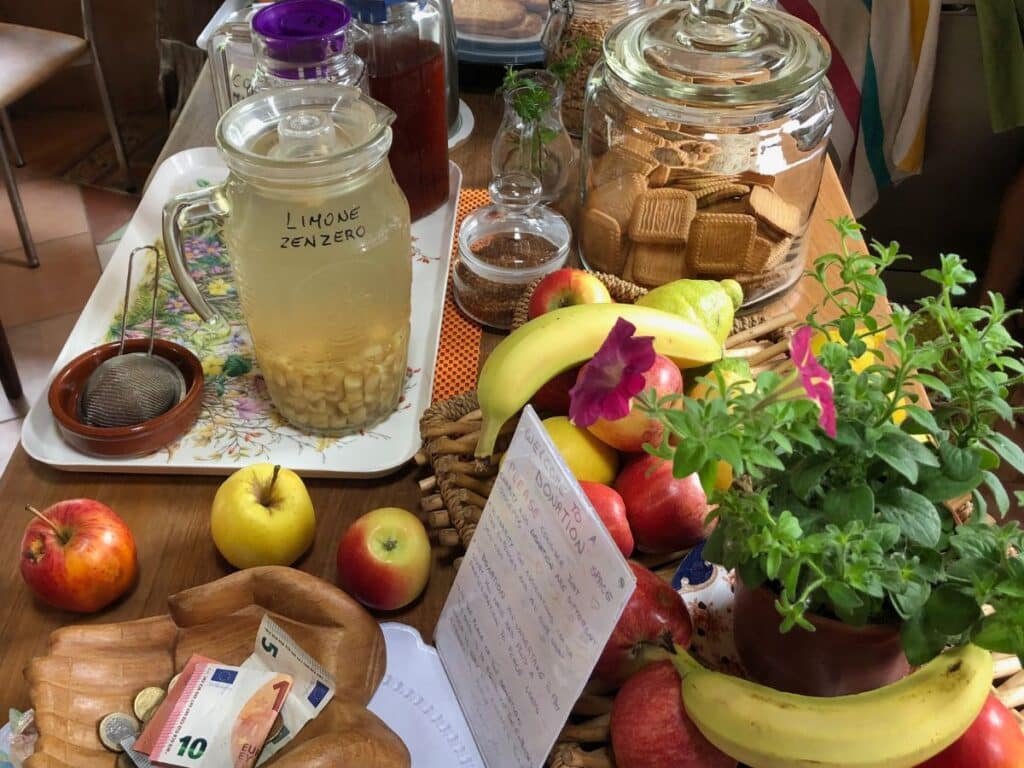

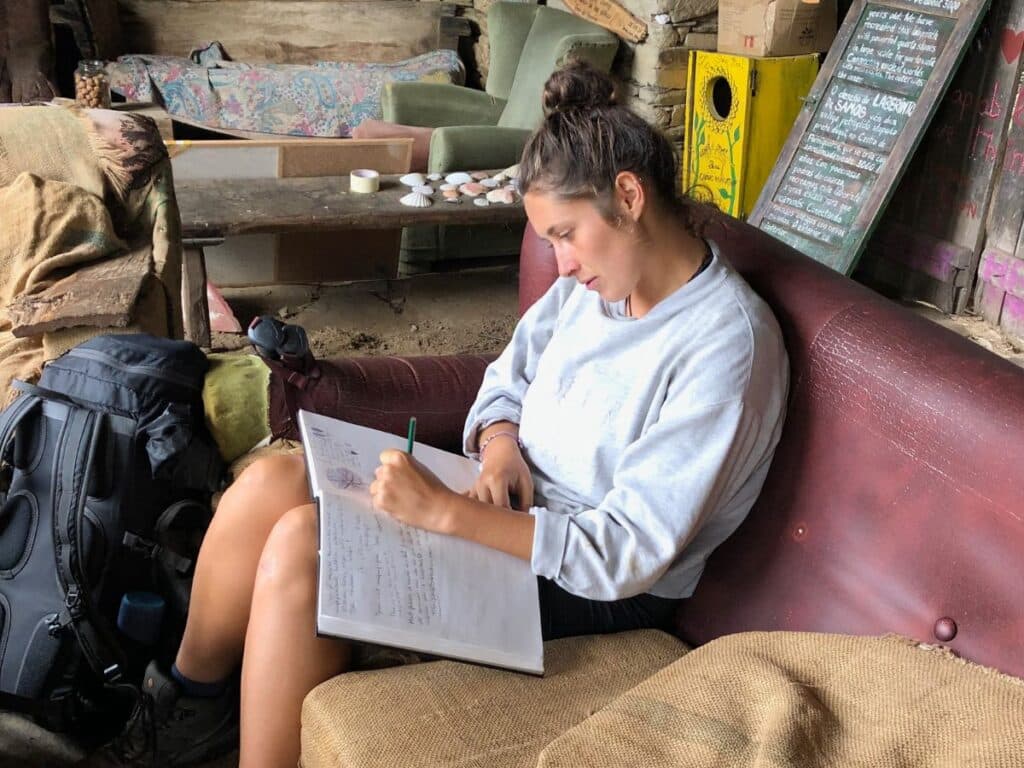
Budgeting is fun, but remember not to miss out
While the challenge of walking the Camino on a small budget is fun, remember that Spain is a really affordable country. Don’t miss out on a glass of wine or coffee if you fancy one. A glass of wine is around €1.50, and a coffee, €1.20. Yes, budgeting is important, but all in moderation.
We would always take a coffee to split up our morning of walking. We had a little ritual where we would walk the first 10km and then stop for a little coffee break.
And if you want to buy an ice cream at a fancy ice cream shop in León, do it – you deserve it!
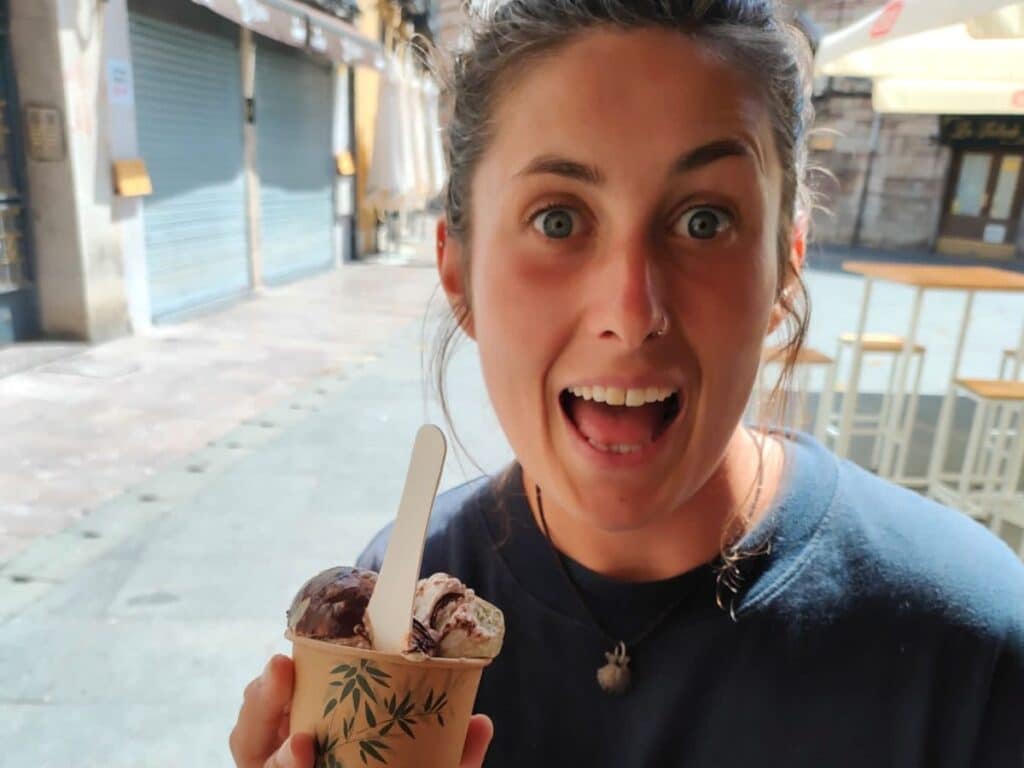
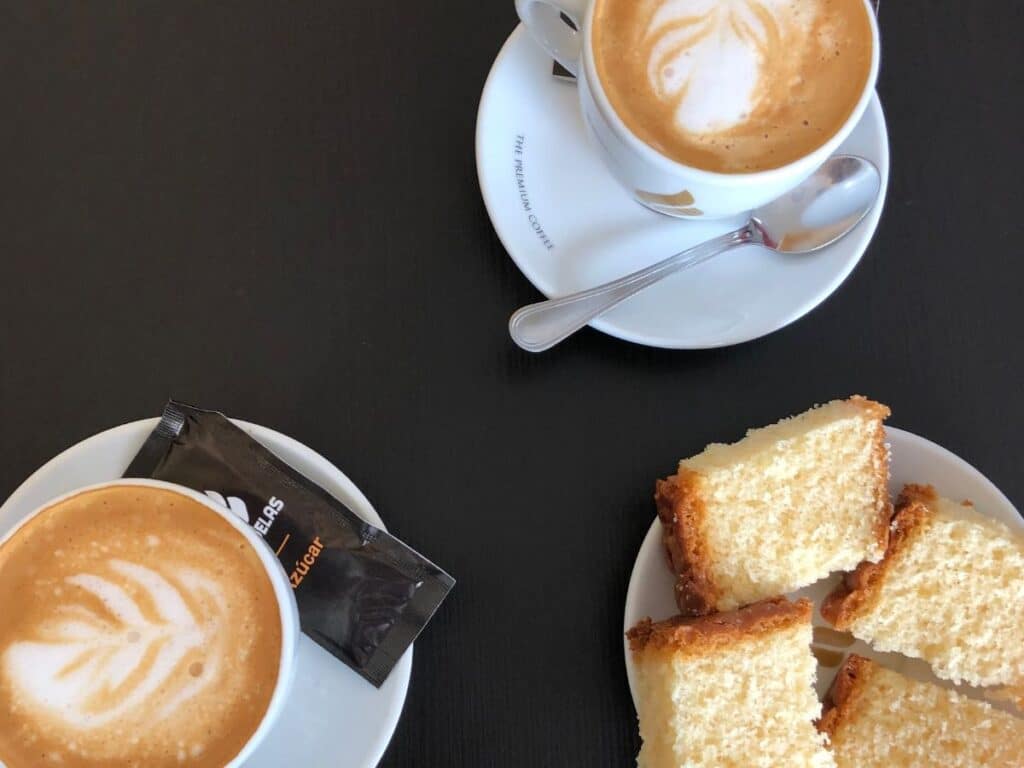
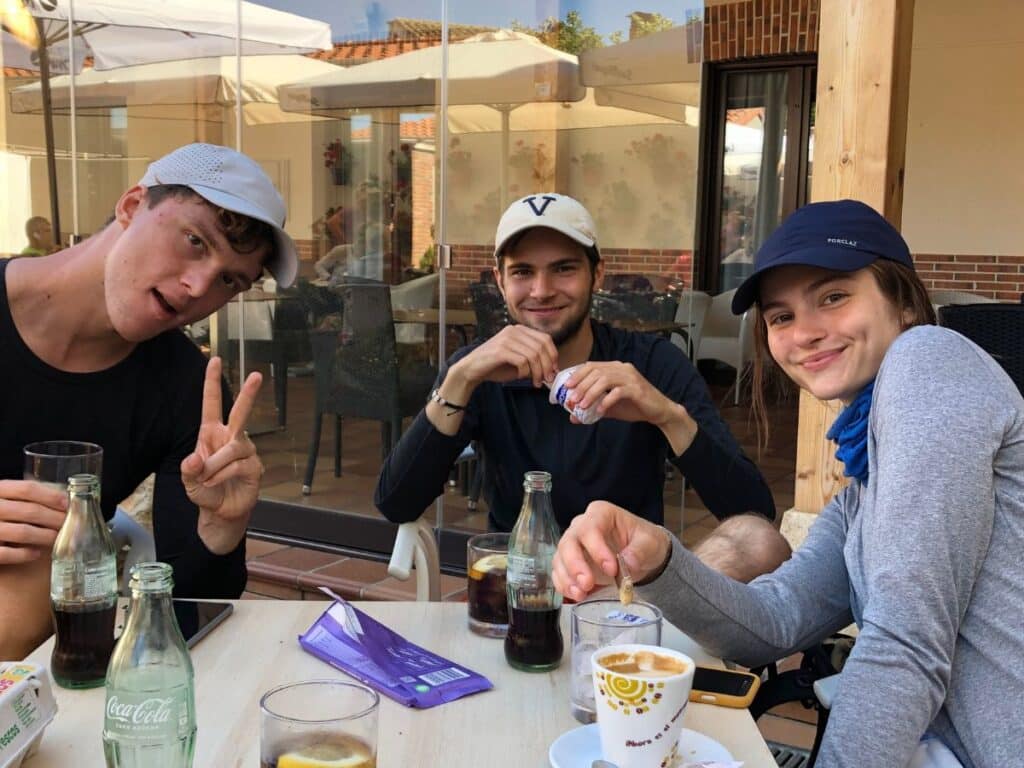
So that’s a wrap!
That’s how we managed to walk the Camino de Santiago on a small budget of EUR 20 per day. We carried our bags the whole way, stayed only in municipal or donativo albergues, cooked our own dinners, had the best supermarket picnics, and STILL bought coffee, tortillas and beers when we needed them the most.
Honestly, I never felt like I missed out on anything.
Spain is such an affordable place to eat and drink. And the municipal and donativo albergues really help out the budget travellers. For EUR 600, I spent a month in Spain!
What would 600 euros get me in the UK?
Read next: What You Need to Know Before Walking the Camino de Santiago
